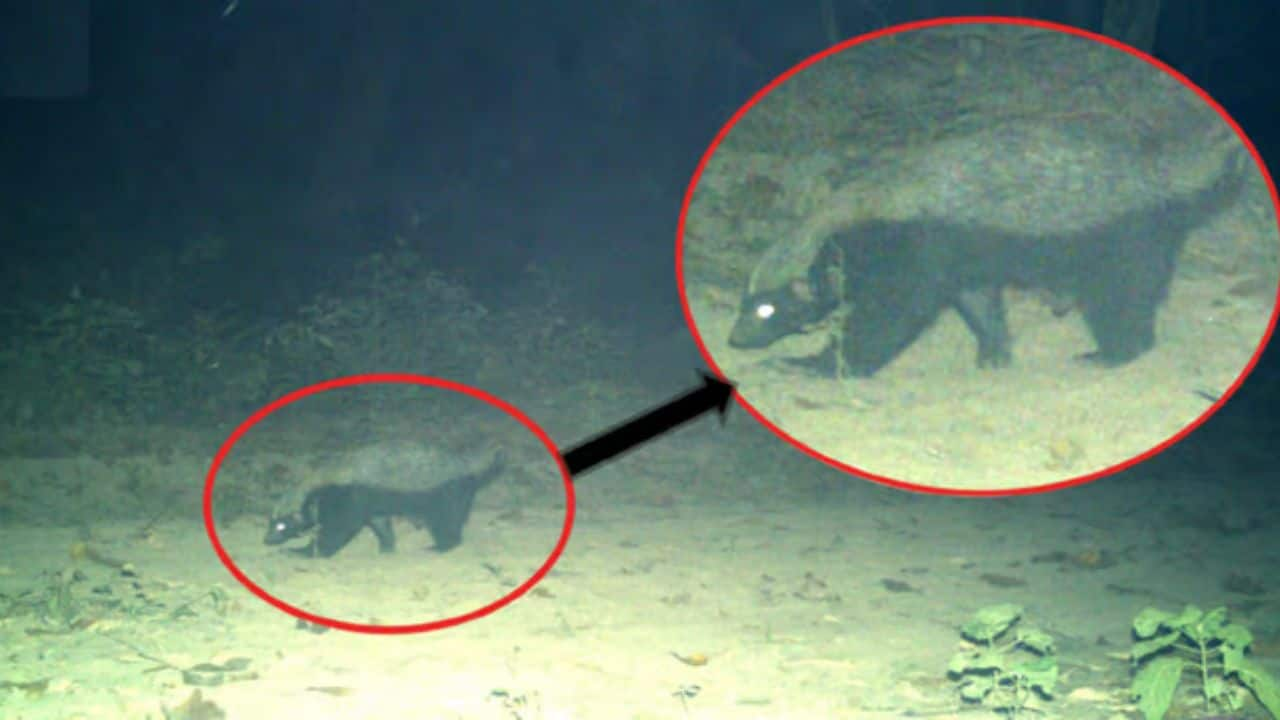



For the first time, a honey badger has been captured on camera in Uttarakhand's Terai East Forest Division. This rare sighting highlights the region's rich biodiversity. The discovery was announced on September 26, 2024, in the Journal of Threatened Taxa.
Known as the Ratel, honey badgers belong to the weasel family. These nocturnal mammals are omnivorous and have powerful claws for digging. Their diet includes small animals, fruit, and honey.
The research team, led by Prashant Kumar of the Uttarakhand Forest Department, documented this sighting. It was the first photographic evidence of a honey badger in the Terai East Forest Division.
 A camera trap captured a photo of a honey badger in the Surai range of the Terai East Forest Division, Uttarakhand.
A camera trap captured a photo of a honey badger in the Surai range of the Terai East Forest Division, Uttarakhand.
The honey badger was photographed on January 7, 2024, near the Sharda River Canal. Initially mistaken for a civet cat, it was later identified by its large head and distinct coloration.
Read Also: Once thought to be extinct, this bald bird, makes a comeback in Europe after 300 years
This forest division is part of the Terai Arc Landscape. This area is home to many species, including tigers and elephants. The honey badger’s presence emphasizes the ecological importance of the region.
These solitary animals can twist and turn to escape predators. They contribute to maintaining ecological balance by preying on smaller animals. Honey badgers also aid in nutrient cycling by enriching the soil.
Read Also: 3,775-year-old ancient log offers new insights for climate change solutions: find out how
Honey badgers have been spotted in other Indian locations, including Karnataka and Odisha. Each new sighting provides valuable information about this elusive species.
“We knew honey badgers were nearby,” Kumar stated. “But this confirms their presence in our forest division.” This sighting allows researchers to study these animals more closely in Uttarakhand.
The Terai East Forest Division links two important wildlife areas. These include the Nandhaur Wildlife Sanctuary and the Pilibhit Tiger Reserve. This connection enables elephants, tigers, and leopards to move freely.
The honey badger’s presence highlights the need for stronger conservation efforts. Protecting these wildlife corridors from human encroachment is vital.
This discovery shows that honey badgers still thrive in Uttarakhand’s forests. “Ongoing monitoring is essential to understand and protect them,” Kumar added.
Discover the latest Business News, Sensex, and Nifty updates. Obtain Personal Finance insights, tax queries, and expert opinions on Moneycontrol or download the Moneycontrol App to stay updated!
Find the best of Al News in one place, specially curated for you every weekend.
Stay on top of the latest tech trends and biggest startup news.